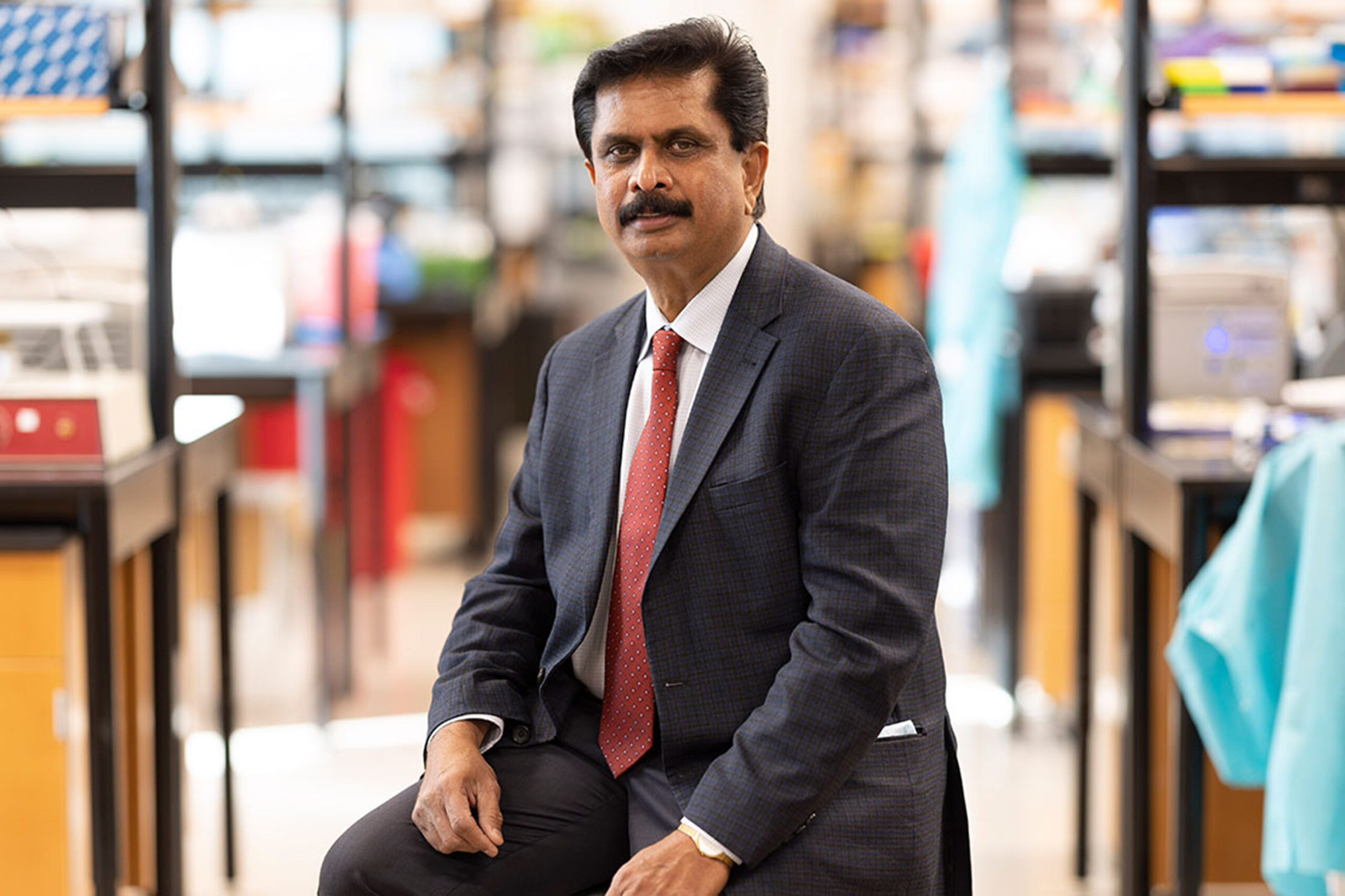Not a brain-only disease
The immediate driver of Parkinson’s is dying nerve cells in a part of the brain known as “substantia nigra” (black substance), where neuromelanin-rich neurons produce the neurotransmitter dopamine that helps control movement. If these cells die, the brain’s dopamine supply falls, and eventually Parkinson’s symptoms become apparent.
For 60 years, the gold-standard treatment for Parkinson’s has been the drug levodopa (L-DOPA). A patient typically takes L-DOPA tablets three or four times a day, lifting dopamine levels in the brain. But the drug’s half-life is brief, and as it wears off between doses the benefit fades quickly, especially as the disease progresses. After about five years of sustained use, many patients develop distressing side effects—uncontrolled arm and head movements, for example.
“These side effects occur not because of Parkinson’s disease but because the most effective treatment is not delivered to the brain continuously,” Kanthasamy said.
Over the past decade, researchers have increasingly found evidence that neurodegenerative disorders can be triggered or accelerated by a sick gut. A healthy gut helps modulate immune responses. When it becomes chronically unbalanced—or “dysbiotic”—it can drive harmful inflammation that affects the brain.
“There has been an explosion of research and information about what goes wrong in the gut microbiome and how it impacts the brain,” Kanthasamy said. “But our work is different.”
He is leading a research team to understand a gut-microbe-brain communications channel, though with a new therapeutic twist. The gut microbiome includes trillions of bacteria, fungi and viruses, some of which are sending messages to the brain. The UGA team has gene-edited a probiotic to prompt the manufacture of a therapeutic by the patient’s body itself.
Someday, patients could swallow a probiotic pill that metabolizes in the gut to manufacture a small molecule, which circulates through the bloodstream into the brain. There it would convert to a crucial neurotransmitter for 12 to 24 hours, relieving Parkinson’s symptoms. In animal models, repeated dosing of the gene-edited probiotic provides continuous production of dopamine longer and can reduce or even eliminate side effects from current therapy.
“We are turning the gut into a drug manufacturer of a safe, tolerable treatment for Parkinson’s,” Kanthasamy said.
The same engineered probiotic can also convert to norepinephrine, a therapy for dementia caused by Alzheimer’s or other neurodegenerative conditions. Kanthasamy and his team recently received grant support from the National Institute of Aging to study a gene-edited probiotic for dementia.

Jamise Lee of the College of Veterinary Medicine (CVM) is investigating how Parkinson’s—a disease closely associated with the brain and nervous system—may get a “jump start” from the body’s periphery. (Photo by Lauren Corcino)
Parkinson’s was once seen as a brain-only disease, but scientists have growing evidence that its pathology could jump-start from the “periphery”—in the vagus nerve, the gastrointestinal system or even within an olfactory organ.
“We look at it more as a disease that can be initiated or spread from the brain to the body’s ‘periphery,’ but also as a disease that could be started from the periphery and then spread to the brain,” said Jae-Kyung (Jamise) Lee, associate professor in the Department of Physiology and Pharmacology.
Parkinson’s disease is related to other neurodegenerative disorders that fall under the umbrella term of “Parkinsonism.” These diseases affect primarily the elderly and share some—but not all—of the same diagnostic characteristics, such as nerve damage in certain parts of the brain and motor and (in some cases) cognitive deficits. They include Parkinson’s disease with dementia, dementia with Lewy bodies (proteins that mass in brain tissue), Alzheimer’s disease with Lewy bodies, and age-related dementia.
Other diseases could also fit into the broad Parkinsonism category. Some veterans who served during the 1990-91 Persian Gulf War suffer from fine-motor neurological deficits that resemble those of Parkinsonism.







